Category Archive for Tokyo + Japan
Away x Minions luggage: kawaii cute suitcases! Alex Streeter Gothic earrings, LaForet mall Harajuku.

Bello! Banana? In this post, I’ll go over some of my current favorites… and then we’ll talk about Japanese fashion at LaForet department store in Harajuku!
First up, let me introduce you to the cutest luggage collaboration ever: Away x Minions. I’m excited to have these adorable travel buddies with me, on my next trips around the globe.
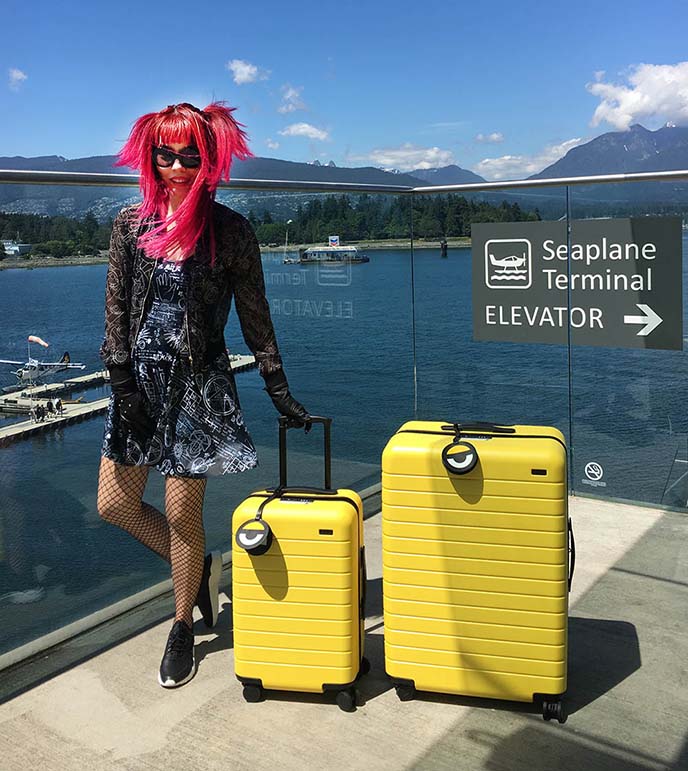
Bee-do-bee-do… As you most likely know, the Minions are the short, eager, bumbling servants of evil masters throughout time (as seen in the Despicable Me movie series).
I love how Away distilled the essence of a Minion in this cheerful, minimal design. When you see the bright yellow case and eye-goggle tag, you can instantly picture a one-eyed Minion tottering behind me!

Away sent me a large-sized suitcase and a carry-on. Both are made from polycarbonate shell, which is lightweight and bends under pressure, but never breaks. (Quite like the resilient Minions from the movies.)
The new Away x Minions collection comes in four sizes. You can also purchase the accessories separately: they have stickers featuring the characters, and a leather tag shaped like their signature eye goggles.
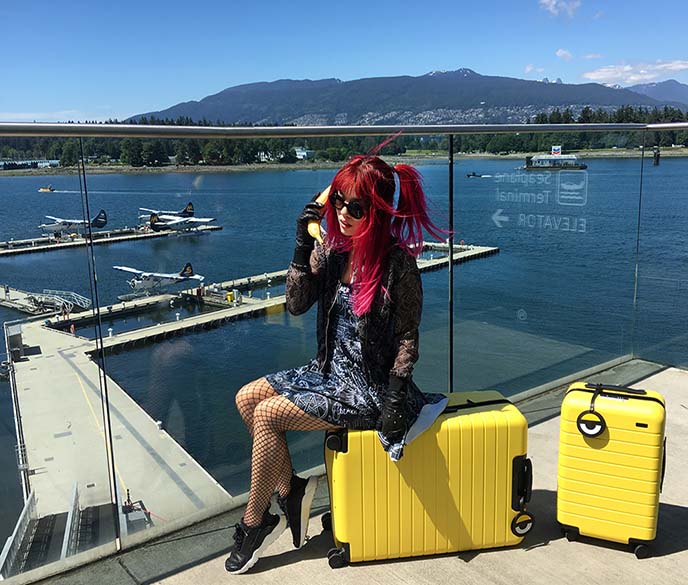
“You used to call me on my banana-phone… Poopaye!”
The Minions roll easily alongside you, with a retractable handle and Hinomoto wheels that rotate 360°.
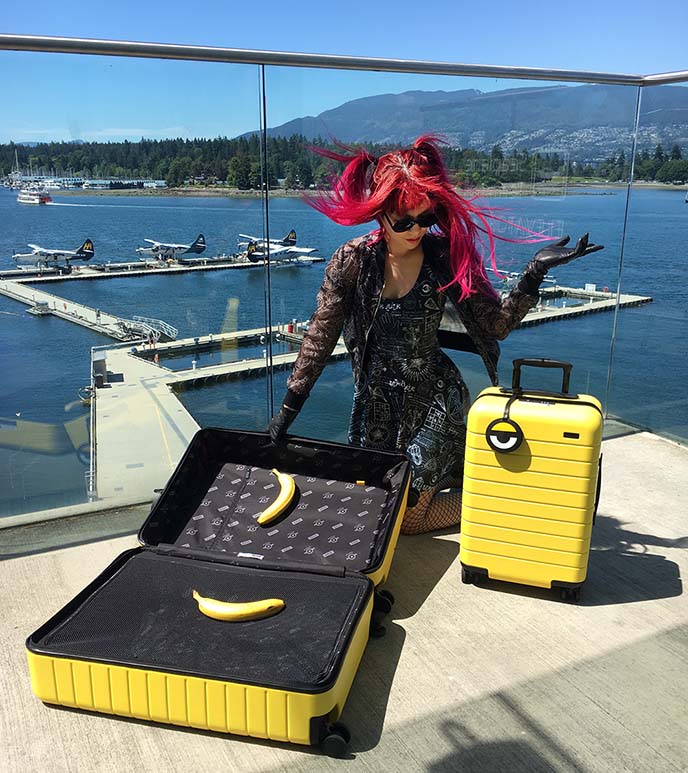
Inside, there’s plenty of room to store bananas. All of Away’s suitcases feature an interior compression system, secure zippered compartments, and a removable laundry bag.

I’m always on the lookout for fun, beautiful luggage that can withstand my constant travels. Away has been on my radar for some time: they produce first-class designer luggage, direct to consumer, meaning that they can keep prices on the economy side.

The larger carry-on is made to fit the regulations of US airlines. And there’s a tech element: a built-in battery that can charge any USB device, and zippers that fit into a TSA-approved combination lock.
Ready to take over the world with these Minions? Away’s Despicable Me 3 collab is only out for a short time, and I have a feeling they’ll be snatched up fast.
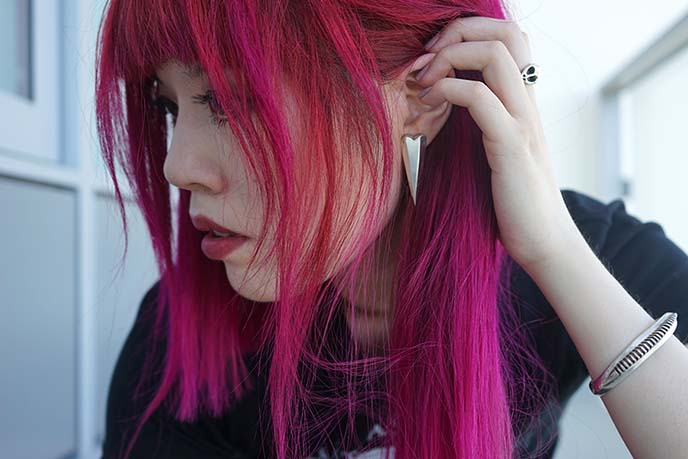
As you know from my outfits throughout the years, I like to change up my styling. I had my ears pierced during elementary school, but stopped wearing anything in them around college. However, the piercing hole remains intact — so I decided to play around with earrings again.
Of course, I clicked straight to my favorite jewelry designer: Alex Streeter! (Above, I’m wearing his radiator silver cuff from the Space collection, Ouroboros ring from the Creatures set, and these silver elongated spike heart earrings that suit me perfectly).
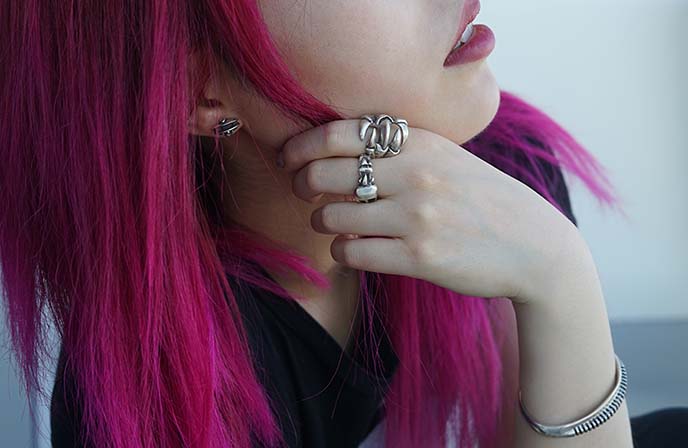
Based in NYC and renown as the creator of the Angel Heart Ring, Alex’s designs are favored by rock stars worldwide (including Marilyn Manson and J-rock legends). He started out in the 1960s in San Francisco, carving jewellery from redwood bark and selling it on the streets. In 1971, he set up shop as a silversmith in downtown NYC.
Today, Alex Streeter is an icon — and the go-to designer for those who love Gothic, sci-fi and edgy high-end accessories. Above, I’m wearing his UFO spaceship studs.

Alex and his daughter Lily (who works with him) are inspirations: they dress in rock-Goth fashion, and travel to Japan every year (he has a rabid fan following there).
Perhaps you’ve seen his famous pentagram ring on the fingers of celebrities. Alex’s jewelry is all made to order, beautifully crafted in sterling silver (he also works with bronze, brass, pewter and gold). You can also contact him through his site to request a unique, customized design.
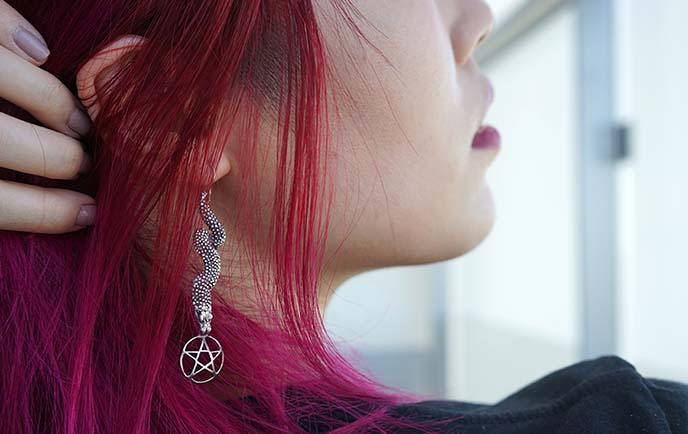
A serpent slithering down my earlobe, with a pentagram in his mouth… I think it’s clear why Alex Streeter jewellery is my absolute favorite! He is a master, and I’ll be treasuring these signature pieces. Stay tuned to see more photos soon — there are more serpentine designs by Alex that I’m excited to show you.
(PS: my hair color and cut are by Stephanie Hoy at Sugar Skull Salon in Gastown, Vancouver.)
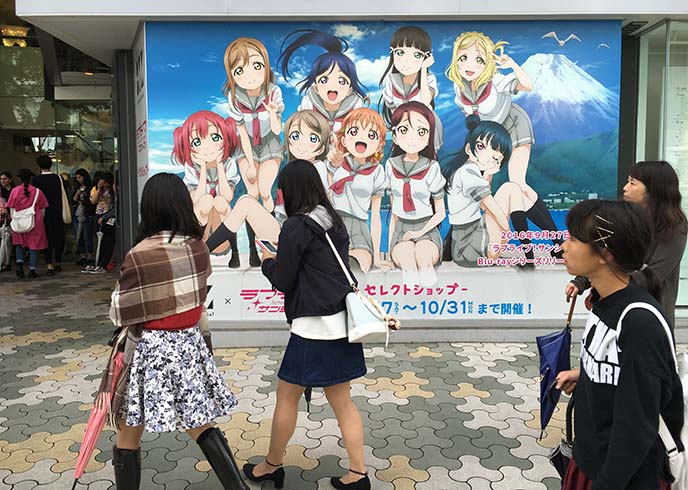
Now, let’s teleport to Japan — and take a walk inside Laforet in Harajuku. I’ve been doing dispatches from this mall since 2008 — see past posts in my Tokyo Gothic Lolita shopping guide.
Although I’ve been less impressed with the selection recently (more on that below), La Foret remains one of the top Tokyo destinations to find young, alternative fashion. You’ll always see chattering groups of teenage girls at the entrance, much like the anime schoolgirls in “seifuku” sailor uniforms on the poster.

Laforet has multiple levels, each with a variety of clothing and brands. The experimental street style tends to be in the basement floors. I’m also quite fond of the first floor, which hosts rotating pop-ups. Japanese up-coming designers tend to be featured, such as these colorful Erico earring and accessories.

There’s been a lot of talk about Harajuku changing for the worse. I’d say there is truth to this, as more and more big box stores have set up shop (H&M, Forever 21, etc).
Nonetheless, you can still find underground and club-influenced designs in this neighborhood.

Case in point: Abilletage has established a new location inside Laforet department store. This antique / Gothic / Steampunk brand is run independently, and produces gorgeous custom-tailored corsets. (Remember I visited Abilletage during my NHK Kawaii TV shoot?)
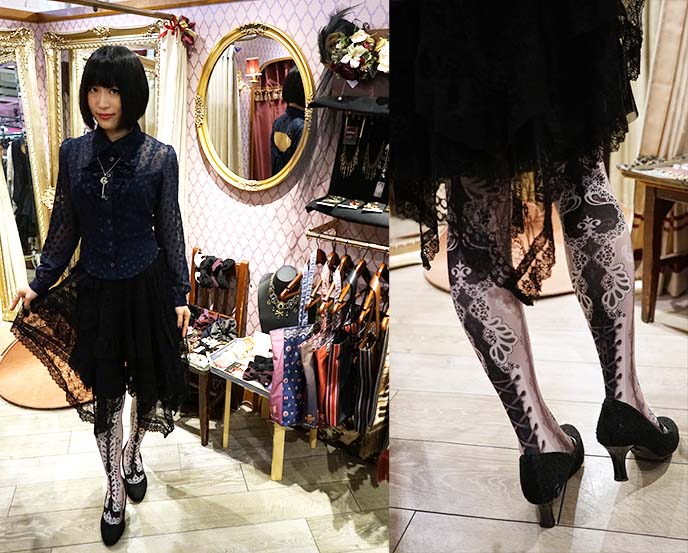
Abilletage is an example of a local designer that keeps the Harajuku spirit going. Everyone there is closely connected to the subculture, and the original designs are handmade or produced in small batches (such as these corset-lace and floral motif tights).
I hope you’ll look for this boutique when you visit Harajuku. Also check out the Abilletage Shinjuku location, which has an elegant Victorian tea salon.

Laforet’s B1 and B2 levels are filled with stores that fall on the spectrum of Goth, Lolita, Punk or Street style. The mannequins in the center of the stairwell are always dressed up to the nines, in EGL fashion.
These days, I’m drawn more to minimalist scary-kawaii fashion, such as this Frapbois oversize top.
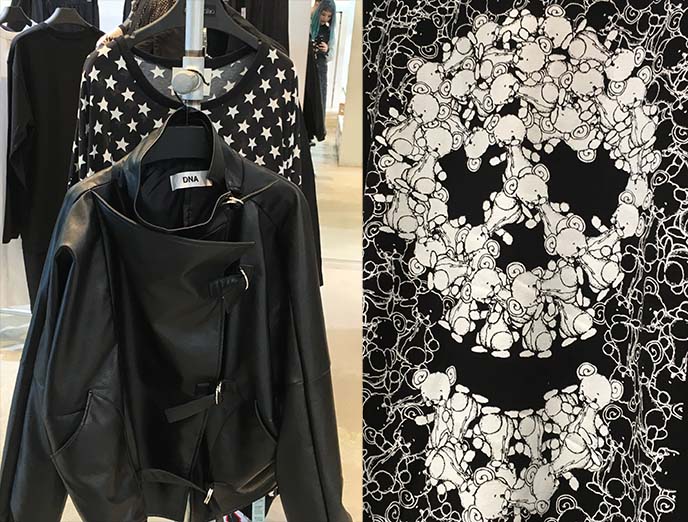
At first glance, the clothes look similar to Western “Nu Goth.” However, they tend to have a Japanese cute twist to them: notice how the skull is made up of cute teddy bears in black and white.

Cute meets psycho at Lurem, a shop with a deranged bunny mascot. I always enjoy discovering Japanese indie brands in Laforet.

As you can see, the youth / street styles can vary widely. These satiny oversized tops are screaming with Bunnicula and anime pumpkin lady prints.
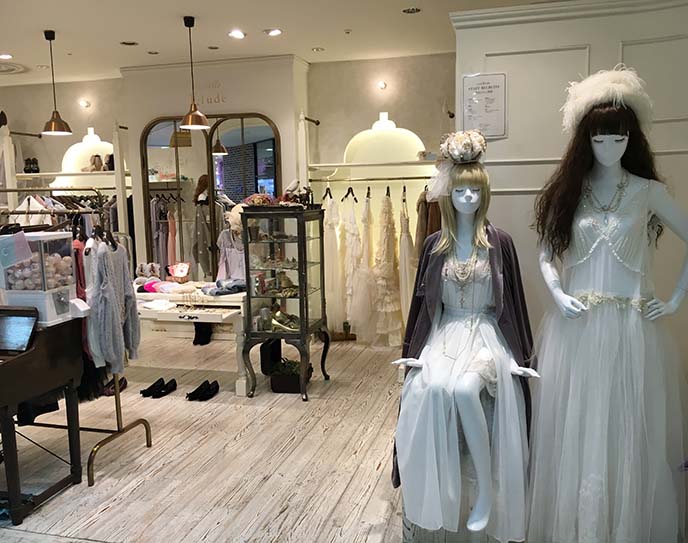
Contrast this with the flowing, gauzy, romantic dolly dresses next door. Perfect for a shironuri look (all-white face paint, makeup and clothing).
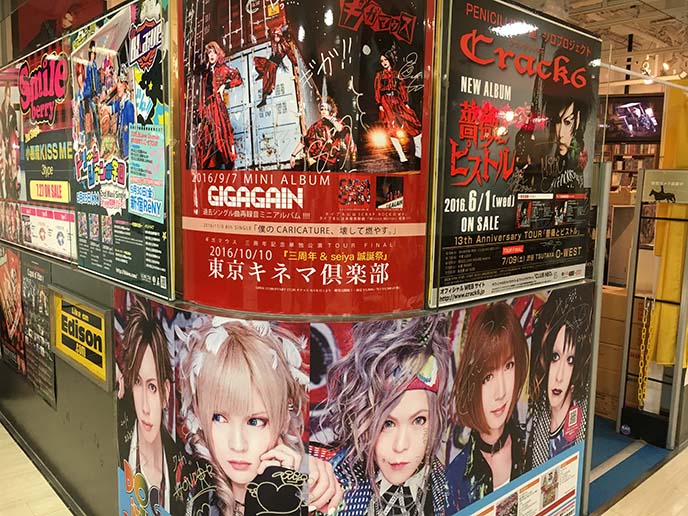
J-Rock and Visual Kei bands still lurk in the basement of Laforet. There are often meet-and-greets, signings and other events here, with long line-ups of fans waiting to meet their music idols.
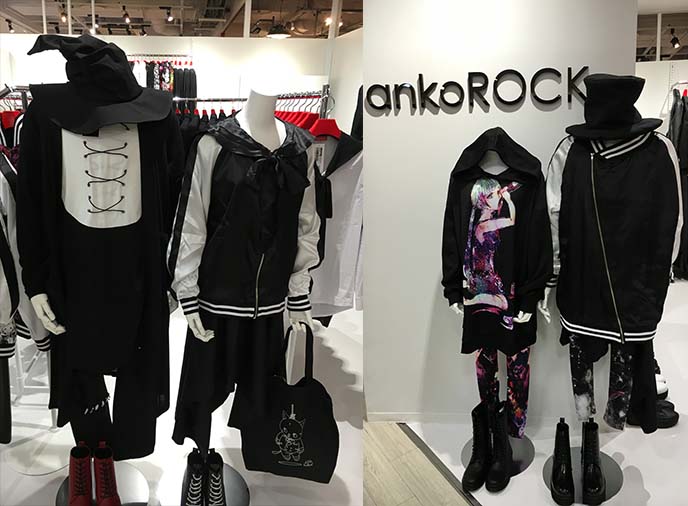
At AnkoRock, influences from punk, rock, and dark subcultures come together in a refreshing way.
I can’t say the same for the Gothic and Lolita dresses I saw, which felt like they hadn’t evolved over the past years, unfortunately. (More about this below).
SHARE & COMMENT
The Birthday Massacre concert: 2017 tour review & new album! Sumo Cyco, Kyoto Gion kawaii shops.

Summer is back, and I’m ready to play! I have some big new destinations coming up — all will be announced soon.
If you’ve been following my Instagram Stories or Snapchat (@lacarmina), you’ll have seen me at the The Birthday Massacre live in Vancouver!
Read on for a review of the Gothic concert. I also included some snapshots from Kyoto, Japan because they remind of Rose (as I last saw this band with her in 2010.)

Greetings, Earthlings. We are now taking over your planet. (Couldn’t resist posing with the UFO spaceship “Time Top,” by Jerry Pethick.)
Before the concert, my friends and I spent the day walking by the ocean, and enjoying the sunshine that has finally hit Vancouver.
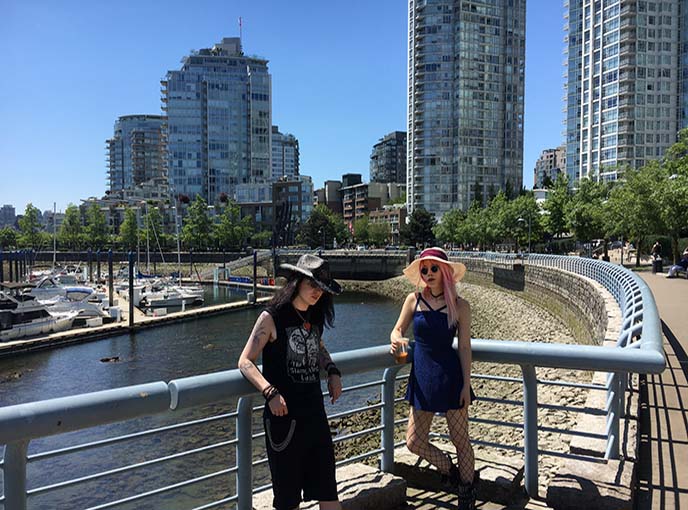
I’m shading my eyes from the light with these exact John Lennon Walrus eyeglasses (yes, he has a glasses collection!) These round, retro metal frames are based on the design that the Beatles musician wore in iconic photos.
If you can “imagine” yourself wearing John Lennon sunglasses, you can get them here.
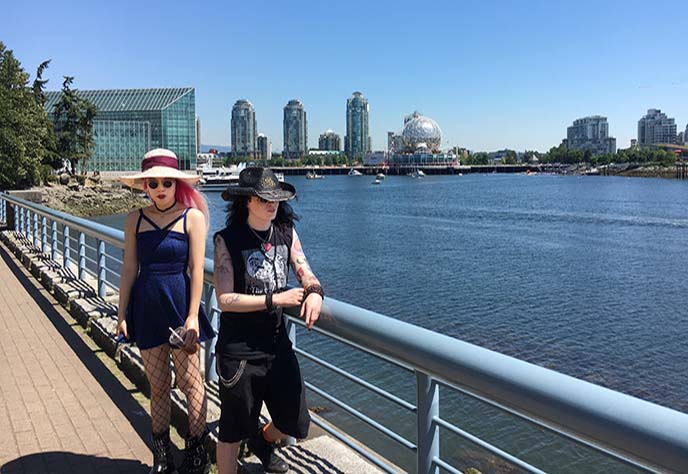
We encountered yet another alien mothership on our walk. (Okay, it’s Vancouver Science World).
– Outfit Details – I bought my dress at Siam Paragon / Discovery mall in Bangkok, Thailand.
My diamond fishnet tights are from We Love Colors. They carry a variety of colored socks and legwear (mine are the wide mesh fishnet style in navy — great for warm weather).
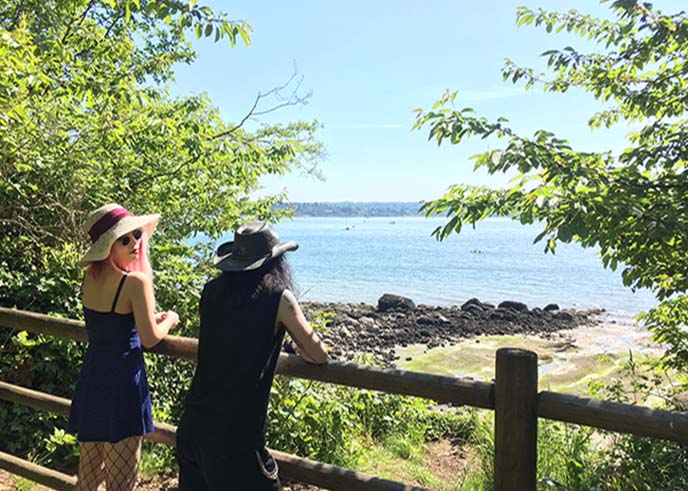
A perfect day of wandering around downtown. We stopped for dinner and cocktails, and then headed to The Venue on Granville Street for the show.
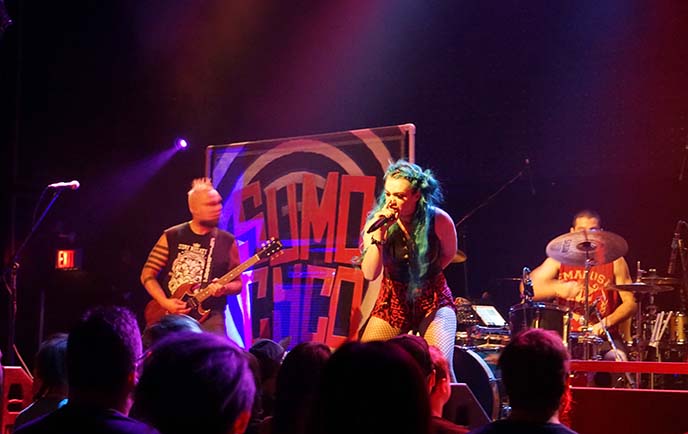
The opening act, Sumo Cyco, started the show — and stole it. The stylish lead singer Sever (or Skye Sweetnam) is impossible to take your eyes from. She tossed her blue-green hair back and forth, crouched like a tiger, and went out into the crowd to down a whiskey shot. By the end of the set, her powerful stage presence had everyone smiling and bopping along.

Sumo Cyco’s songs are a mix of punk and metal: catchy hooks and riffing guitars over heavy beats. I was impressed with Sever’s vocals, which moved from the sweetness of Gwen Stefani to a deadly growl.
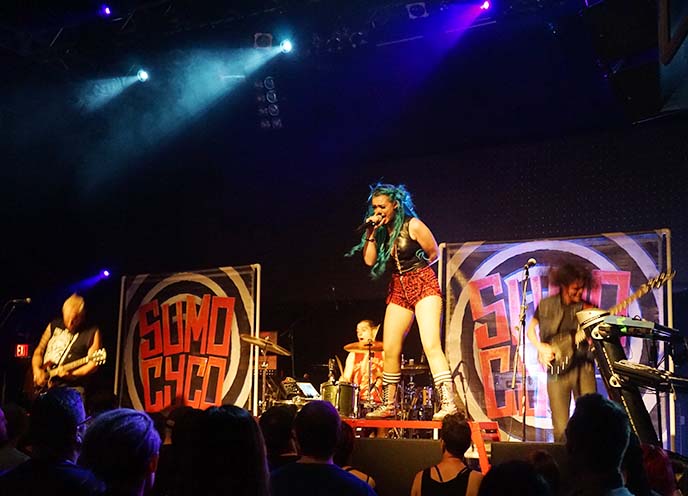
My friends and I were all blown away by Sumo Cyco, and would see them live again. It’s fantastic to discover an indie, female-fronted band that rocks this hard, exceeding all expectations for an opening act.
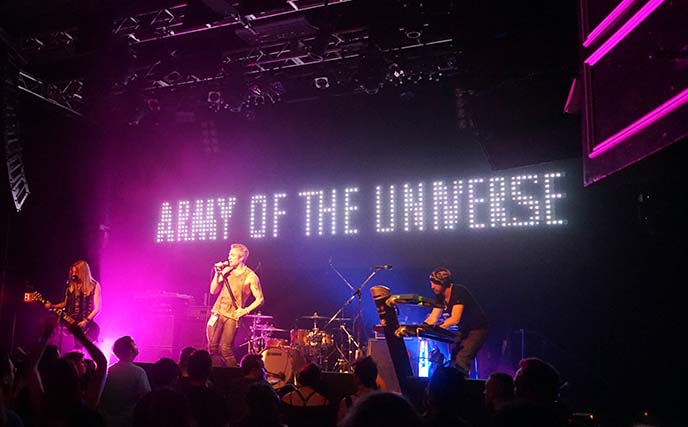
Next up: a solid performance by Army of the Universe. This industrial dance music group hails from Italy, and is signed to the Metropolis Records.
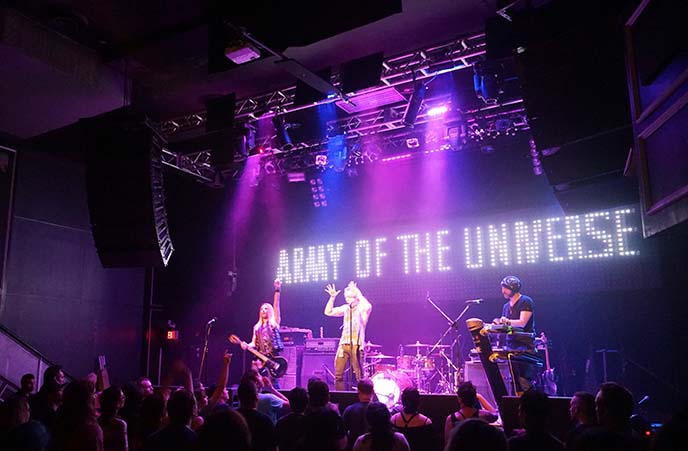
I’m often reminiscing about the 1990s these days… Army of the Universe spoke to my nostalgia, with an electro-techno industrial rock sound reminiscent of early Nine Inch Nails.
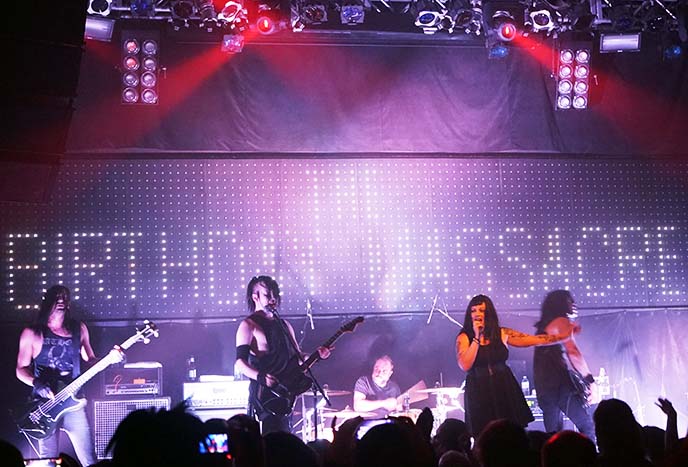
The crowd went crazy when The Birthday Massacre walked on. The Canadian Gothic group formed in 1999, and has cultivated a rabid following ever since.
It seems all my alternative friends have seen them at some point, and continue to love them (myself included). The band’s dark vision yet inclusive, positive energy have made an impact on many growing up Goth.

The dynamic lead singer, Chibi, displayed as much energy as ever. She always gives 100% love to her fans, trading cheeky comments and reaching down to hold their hands.
The band’s name, The Birthday Massacre, perfectly encapsulates front-woman Chibi: cute, chirpy, with a touch of evil.

Any time you see The Birthday Massacre on a concert bill, you know you’ll get a brilliant performance. The musicians displayed their talent through a wide-ranging dark spectrum of sound: electronic, atmospheric, Goth-melodic, headbanging guitar, and the all-mighty keytar.

Michael Rainbow and Chibi are two of original founders (along with Michael Falcore), and you can sense the telepathic connection between them on-stage.
The touring drummer, Nik Pesut, only had two days to learn the songs, and rocked them. Even with a new addition, the live show is as strong as ever.

The Birthday Massacre treated us to two hours of nonstop fun and dancing. They played their most beloved songs, including Blue, Kill the Lights, Looking Glass. Chibi gave a shout-out to a fan celebrating her big day, at the start of the Happy Birthday song.

The group also debuted a few new songs from their upcoming album. I can’t wait for this one: my friend Kevvy Metal (Kevin Maher) worked on the production, and the cover art looks fantastic. The newest songs are on the heavier side, with lots of headbanging riffs.

The band ended with a three-song encore, including a cover of Tiffany’s “I Think We’re Alone Now” that got me cheering. (All right, it’s originally by Tommy James & The Shondells).
The Birthday Massacre put on a brilliant, fan-friendly show as always. Check out their site for upcoming tour dates; this is an act you must see live.

My friends and I were talking about how strange it is to talk about Rose in the past tense… she would have been the first to get tickets for this show.
Still, it feels like she is alongside us, at events like these. In this vein, thought I’d end by sharing some last photos from Kyoto: I took snaps of cute stores that she would have gone wild for.

Rose always wanted to go to Japan, but her health never stabilized to the point where it was possible.
When I saw this collection of cute little seals (San-X Mamegoma toys), I immediately thought of her. She’d run right over to them and give them a squeeze!
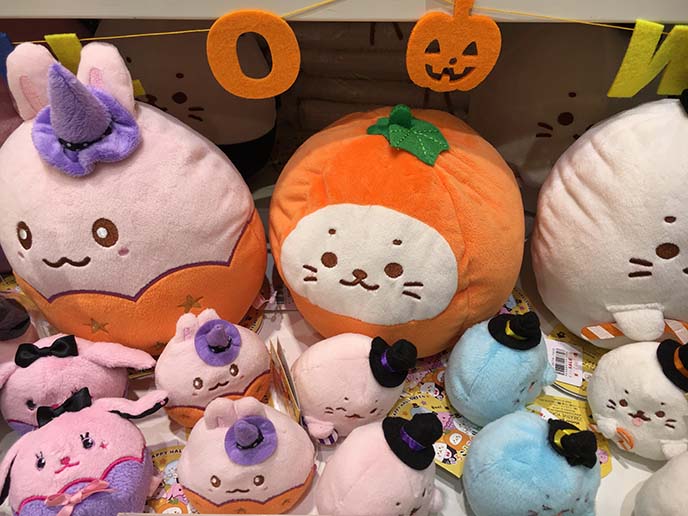
Rose loved Halloween everything (like me), and all things kawaii with a touch of weird. She would have swooped up these pumpkin-seal and witch-rabbit hybrids.
This Kyoto portion continues below…
 LA CARMINA
LA CARMINA






